Gunns Plains Cave: Caver’s Contributions
P.O.Box 20 Ulverstone Tasmania 7315 President/coordinator Karstcare: cavers looking after caves.
Email: tascaver@bigpond.net.au
Abstract
Gunns Plains Cave is a developed tourist cave located 30 minutes drive south of Ulverstone, and is included on the ACKMA conference itinerary.
David Wools-Cobb coordinates an environmental group called Karstcare: cavers looking after caves.
In this paper David will outline what work his group has achieved, both within the tourist section and in the ‘wild’ section of this particularly beautiful cave.
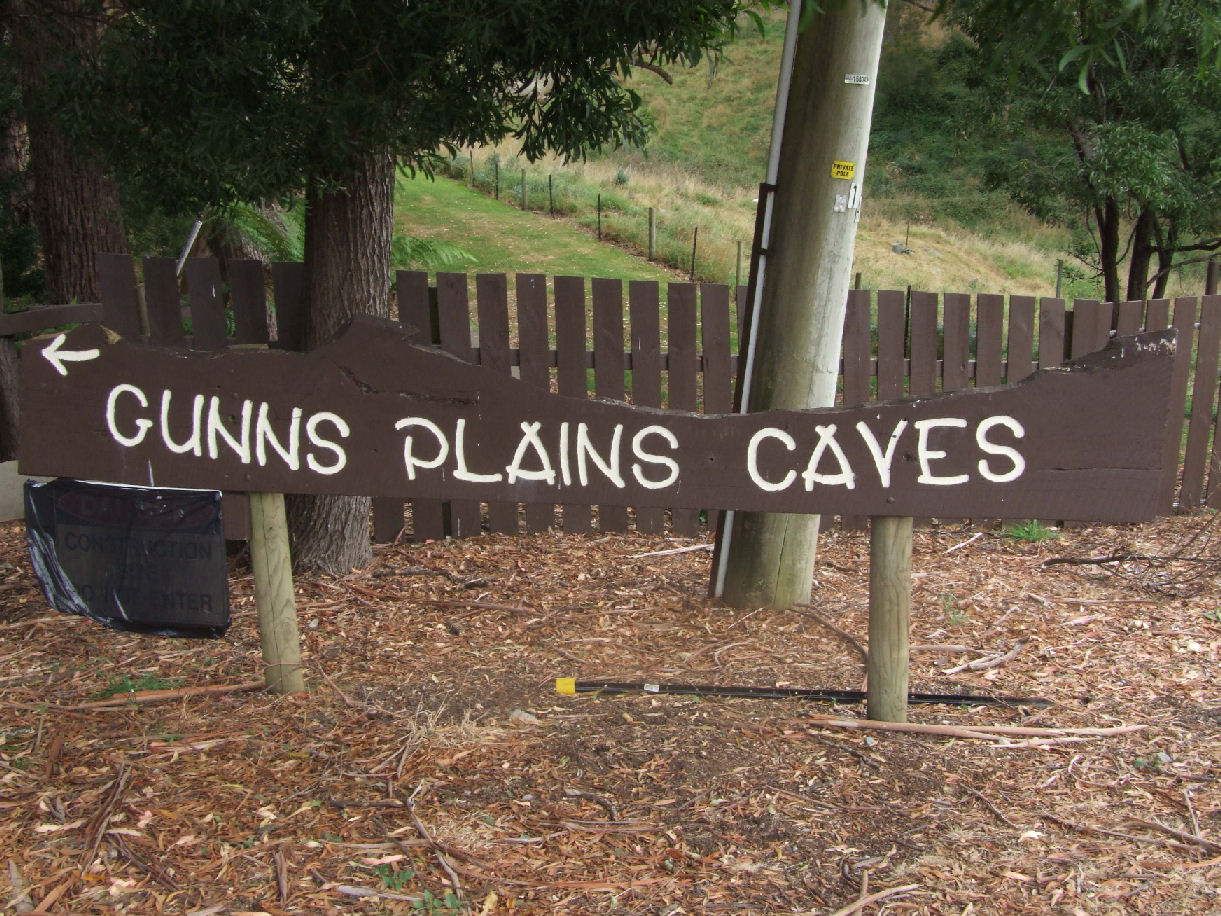
Introduction
Gunns Plains Cave was discovered in about 1894 by William Woodhouse. It opened as a developed tourist cave in 1909, being lit with acetylene gas.
Over the years there have been further developments, particularly in regard to lighting.
The cave was re-wired in 1947 and in 1958 changed from 240 volt system to 100 volts. In 1980 there was some further electrical renovation and more recently in 2008 a complete re-wiring and re-lighting project was completed under the consultancy of Neal Kell. (Blanden, 1999)
The cave has been surveyed a number of times, with the tourist section within about 1/3 of the entire cave. Its surveyed length is 1328 metres. (Blanden 2008)
The land managers are the Parks and Wildlife Services, with current concession holders being our own ACKMA members Geoff & Trish Deer since 2004. Gunns Plains Cave hosts up to 11,000 visitors each year.
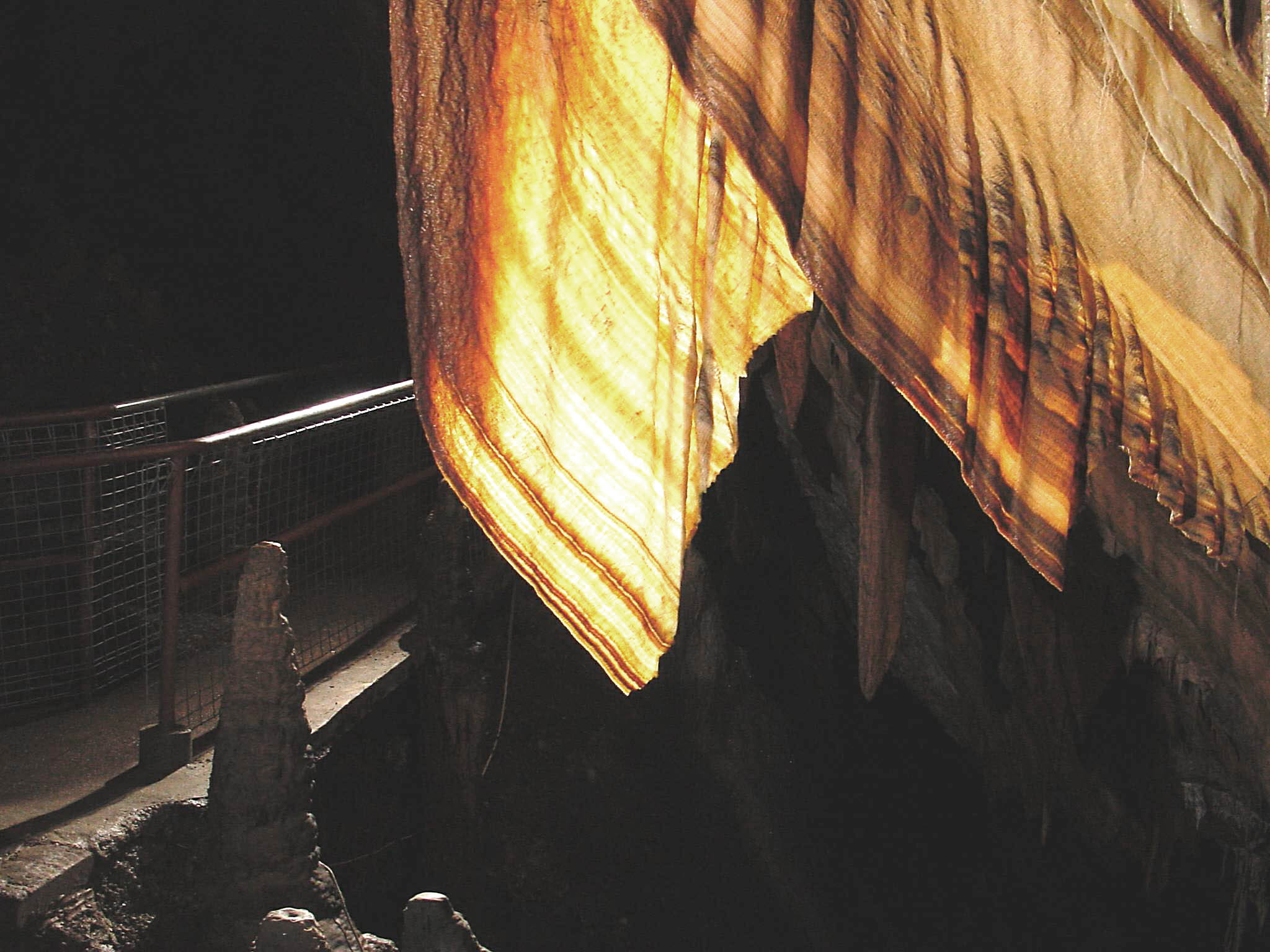
Initial Caver Project
Several years before Geoff and Trish Deer took over the concession, a number of local cavers noted a considerable accumulation of “rubbish” within the tourist section. It was decided, with permission of the operator that we’d have a basic working bee to clean things up. This was all before Karstcare actually existed. Six or seven of us met one week night, taking in a heap of large bags, with each of us concentrating on different sections of the cave.
It was amazing what we removed. From memory: over 70 broken light bulbs, dozens of pieces of chewing gum, several combs, 1 cheap camera, 1 pair of sunglasses, lots of old wiring, bits of metal and timber that had been dumped in various places. The section immediately below the high viewing platform was particularly interesting. Just below is a long semi-tubular drop that clearly had been the repository for many people’s litter, particularly chewing gum!
A total of 13 super bags of rubbish was removed, as well as some scrubbing down of areas at ankle height that had been marked by the considerable foot traffic that this cave has experienced. (Wools-Cobb, 2008)
After that evening’s work we all felt considerably disgusted at how the operators over many decades had discarded blown light bulbs and clearly not supervised visitors adequately, however we were pleased that we’d left the cave in a much better state.
Wild Cave Section
I believe the section of Gunns Plains cave beyond the tourist section is only rarely visited by cavers, in fact probably less than 20 per year. I think I know why. To access this requires climbing from the final viewing platform, down to stream way level, then squatting in usually freezing cold water to at least chest height and slipping through a tight section as quickly as you can. It could be said that the ‘wild’ part of Gunns Plains cave is somewhat self protective!
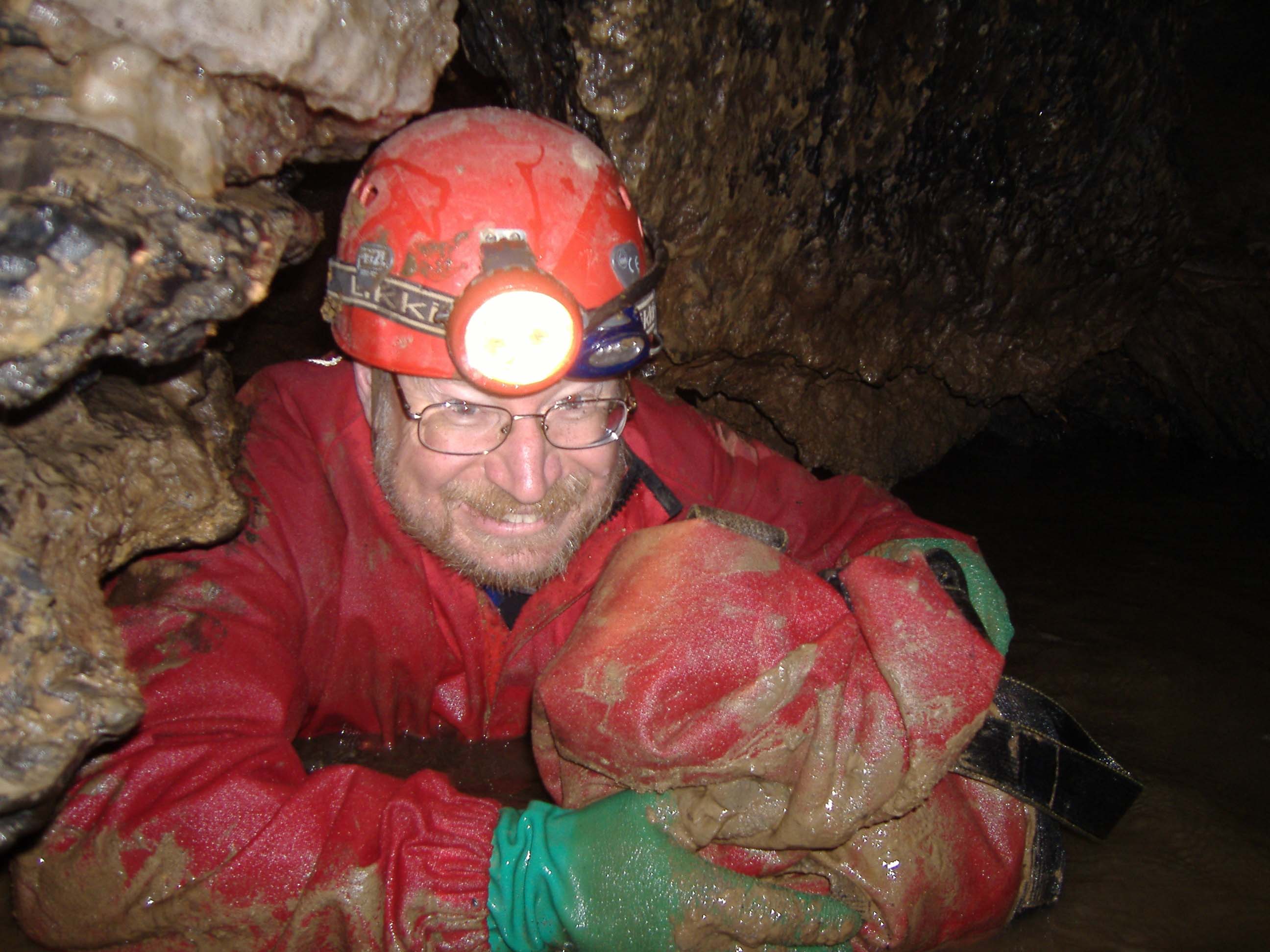
Notwithstanding this, the wild part of this cave is truly magnificent. I feel that if not for the considerable restriction, much of this section of the cave would have been developed previously.
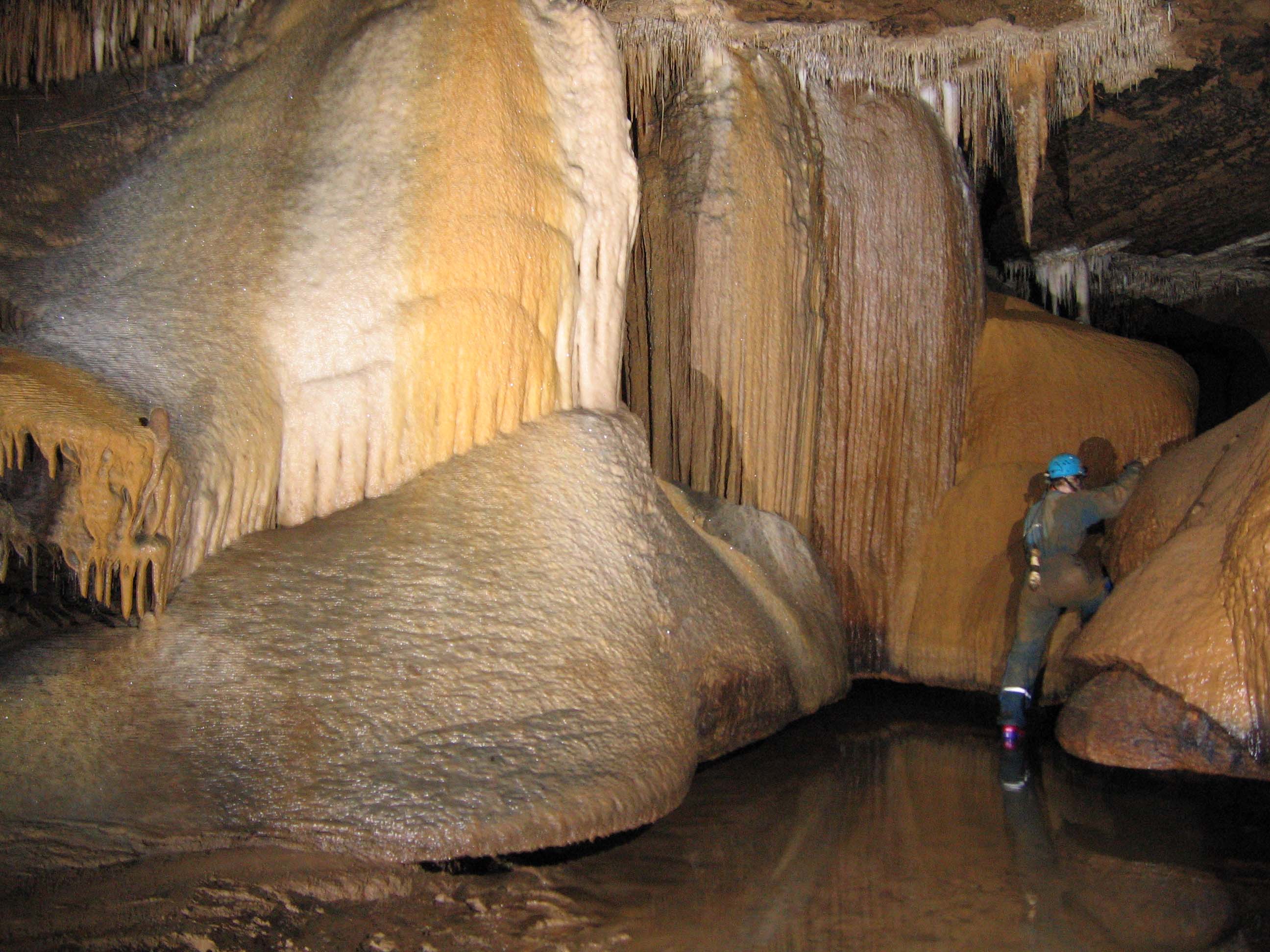
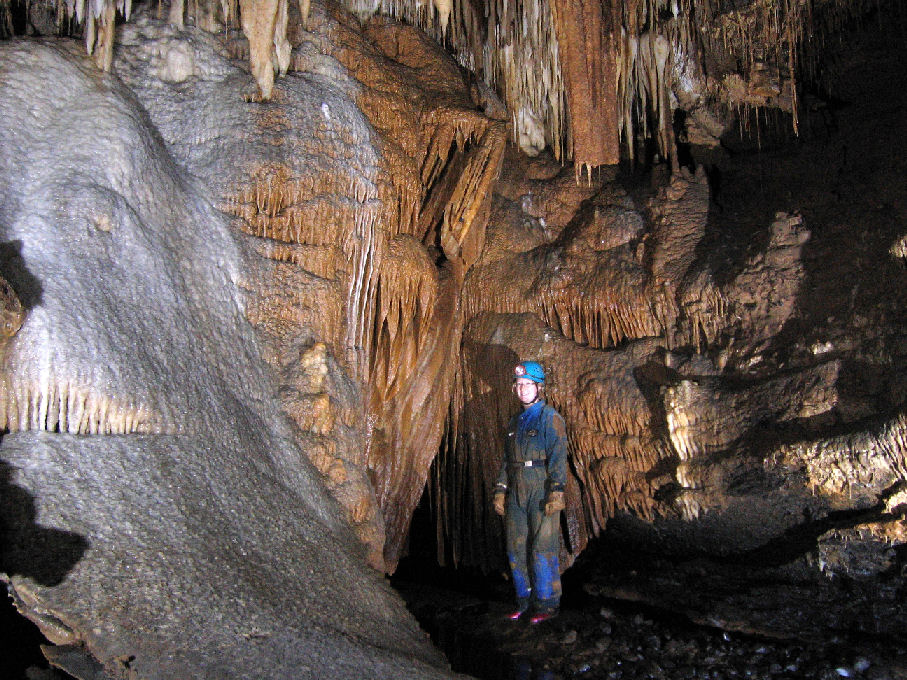
On a trip many years ago with local Gunns Plains caver Stephen Blanden, I noted several muddied areas, and areas of clay leading to flowstone pavements. Even light caver traffic had resulted in some mud and clay tracking.
It was decided in conjunction with Karst officer Ian Houshold that some Karstcare management could rectify this mud tracking and reduce further damage in the future.
Karstcare ran a working bee to this area in March 2008. We cleaned most of the mud and clay tracking and placed rubber matting on areas usually walked, to avoid further mud tracking in the future. We also used minimal string lines to delineate the preferred route where this was not obvious. Unfortunately with the recent extreme flooding of the cave, although our stringlines remained intact, most of the matting didn’t. We have since returned to replace this matting and hopefully it will remain secure. We have also used local rocks to cover some areas not cleanable to prevent boots picking up mud or clay as cavers exit the stream way.
Relighting Of Gunns Plains Cave.
During the middle of 2008, Neil Kell, known by many ACKMA members, designed and supervised the re-wiring and re-lighting of the tourist section of the cave.
Karstcare was approached by “Parks” about the possibility of carrying out a general clean-up of the cave, including any litter, old electrical wiring and fittings and to recover some of the more inaccessible fittings if deemed safe.
Before the working bee, considerable liaison occurred regarding risk management and safety issues. It was quite funny reading a risk assessment written by a non-caver, with some of the risk mitigation principles actually increasing the risk to the participants. Karst managers, of course have to consider such things, however they also have to acknowledge that cavers are inherent risk managers, and are undoubtedly the people most comfortable in such a work environment.
With only 2 week’s notice we managed to get 11 Karstcare volunteers from Northern Caverneers and Savage River Caving Club, together with Neil and 3 Parks' staff to work on site.
The day commenced with an explanation of the OH&S issues from a PWS officer, and explanation of what was expected from the group by David Wools-Cobb, with work areas being allocated to groups of two, and rubbish bags distributed.
One member coordinated each group, explaining each area to those unfamiliar with the cave, while Neal & David examined each “exposed” area requiring work which had been deemed unsuitable for contractors to remove old wiring & fittings.
Each pair worked both sides of the pathway and at times higher to the sides where old wiring could be removed, and the pathway was freshly vacuumed. Parks' staff made several trips with rubbish bags and assisted by fetching tools when needed. Some of the working conditions, under rocks, in the stream way and under the walkway were not the most comfortable, but who is better accustomed to such conditions than cavers?
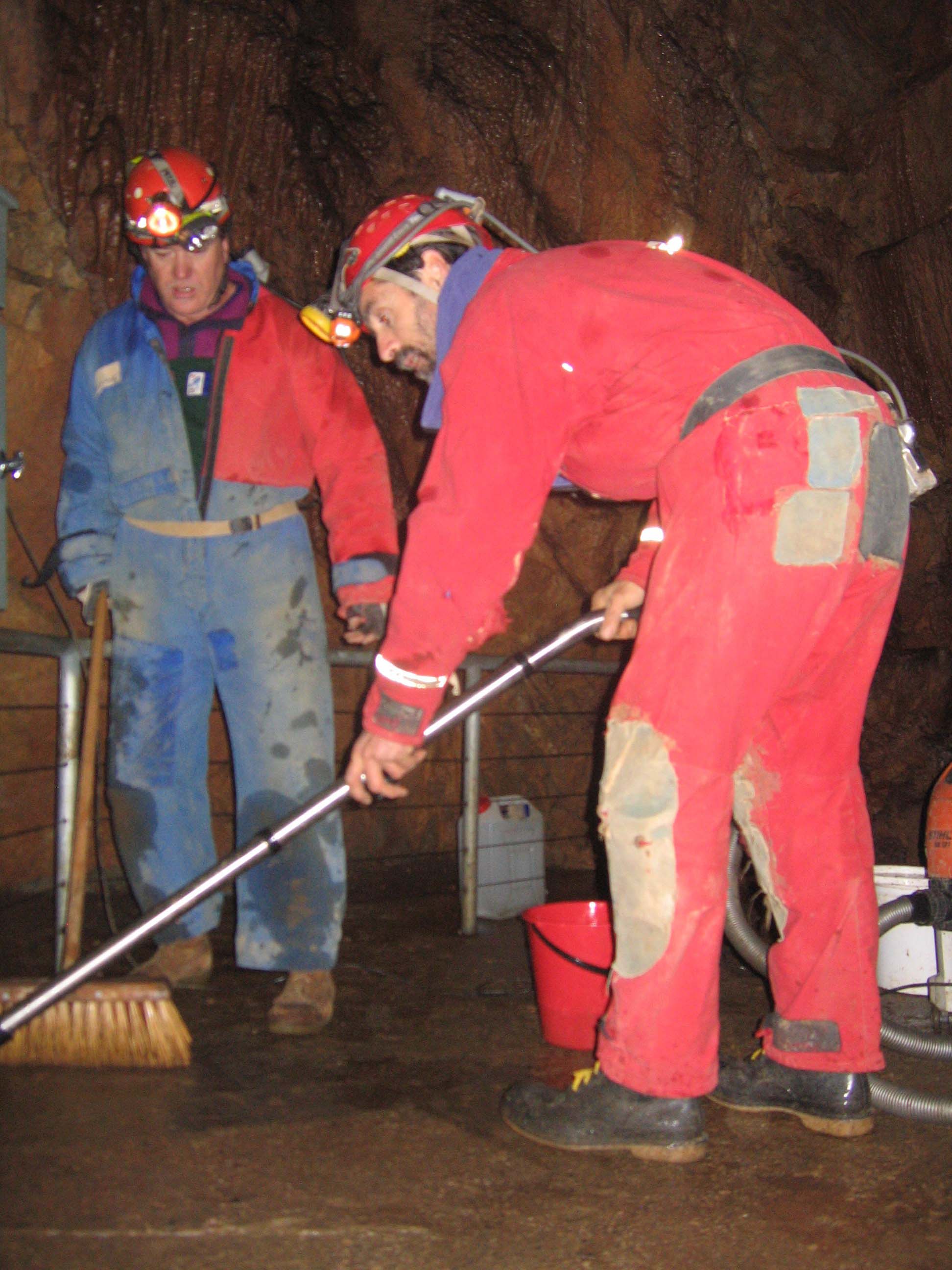
One of our tasks was to cut a long thick cable in several places where it headed through a rock fall. It was amazing just how heavy copper wire can be!
Some of the previous wiring required considerable climbing and rope skills to remove, something I’m sure the electrical contractors would not be prepared to do.
Our own Cathie Plowman managed to recover some old wiring and other bits of historical interest to add to other historical artefacts that are currently held by Parks at the Ulverstone office.
At the grand re-opening, the electrical contractor was extremely impressed with our work and possibly the fact that we went beyond what was expected and probably saved his men a couple of days work. A substantial donation was made shortly afterwards for on-going Karstcare projects.
Lampenflora Project.
During the re-lighting project Neil Kell had observed some 48 sites of Lampenflora- an algal growth due to artificial light proximity. In late 2008 a project was put together by Cathie Plowman and Karst scientist Rolan Eberhard to locate the sites of this unnatural intrusion, photograph them and commence treatment. They managed to re-locate 35 sites, of which 24 were photographed. They observed that to a large extent this Lampenflora seemed to be receding, so decided not to treat it at that stage, but monitor it further. (Plowman, 2008) It appears that with the removal of the stronger lighting and relocation of many lights that this growth may not survive, however a re-examination of these sites is planned in the near future.
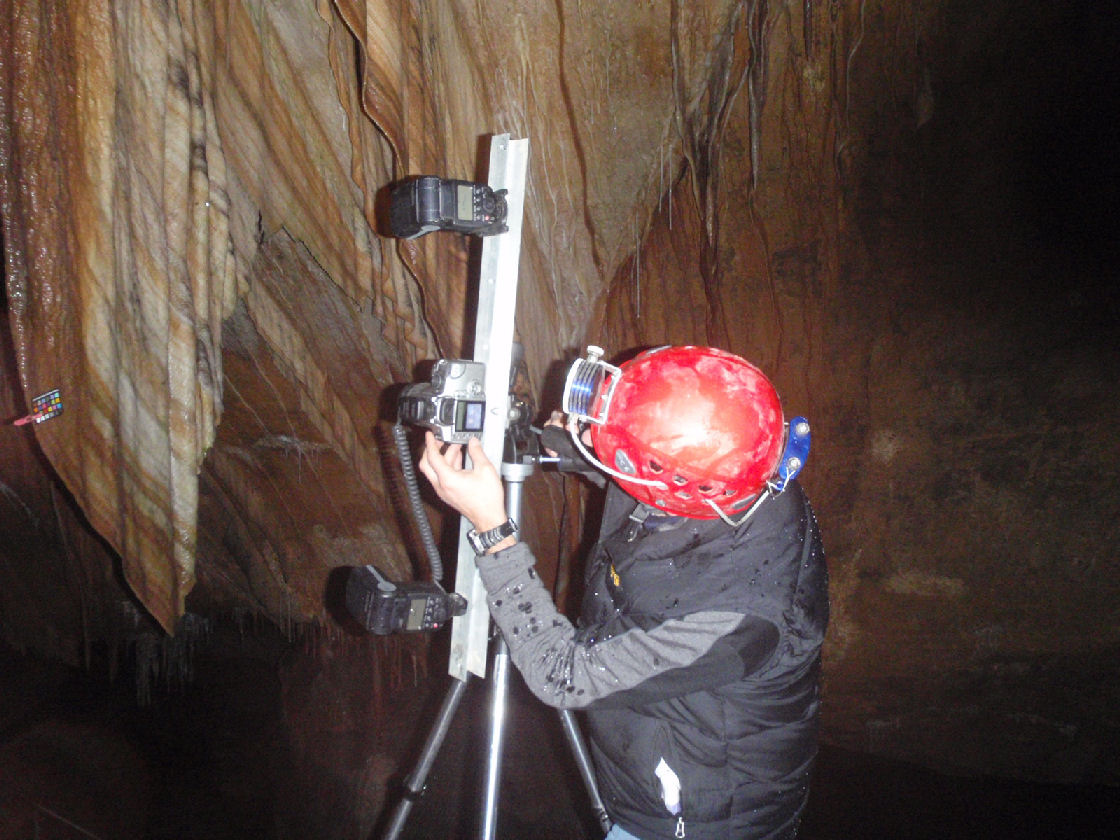
Conclusion
The projects I've outlined have contributed 198 hours work to the management of Gunns Plains Cave. These projects have been varied and involved several different skills. We cavers have not concentrated on only the parts the tourists see, as management of the whole cave is important.
Some managers think that the best way to manage a cave is to just keep people out; however in a developed tourist cave, many of the management problems are exacerbated by the high visitor numbers. Karstcare's philosophy has always been management for people not against them. Our works have long term strategies to minimise impact from human visitation. We cavers are comfortable in dark, wet cold environments (well at least Tasmanian cavers are!), we have a variety of skills and can contribute in a very positive way to cave management.
Since its inception just over 10 years ago, Karstcare has contributed almost 2000 hours of hands-on work of karst and cave management, plus of course the many hours that go into administration and funding applications. We like to think that our visit to a cave leaves it in a better state.
Acknowledgements
Many thanks to my band of willing caver volunteers and the cooperation of Geoff & Trish Deer.
Photos by D. Wools-Cobb and C. Plowman
References
Blanden, S. (2008). Gunns Plains Cave. Tourist Booklet
Blanden, S. (1999). The Darkness Beneath. Gunns Plains Caves & Karst. Publisher unknown.
Cigna A. (2001). The Problem of Lampenflora in Show Caves reprinted ACKMA Journal No 82
Wools-Cobb D. (2008) & (2011) 13.3.2008, 6.7.2008, 19.3.2011 Working bee reports
Plowman C. (2009) April 2009 Working bee report: